CNA Staff, May 29, 2024 / 06:00 am
“Much longer than any of us.” That’s how long Anne Kenny-Urban says the Cathedral of the Sacred Heart’s newly installed organ will last.
Kenny-Urban, a board member of the Cathedral of the Sacred Heart Foundation in the Diocese of Richmond, Virginia, is part of the huge team of administrators and advocates that have spent nearly a decade planning and executing the replacement of the cathedral’s more-than-century-old gallery organ. The instrument was installed shortly after the cathedral was completed in 1906. Built by the John Brown Company of Wilmington, Delaware, it was reportedly the largest in the country at the time.
Over the course of nearly 120 years, it received countless repairs, renovations, and upgrades in order to keep it running, including a complete rebuild in 1940 and a major renovation in the early 1990s.
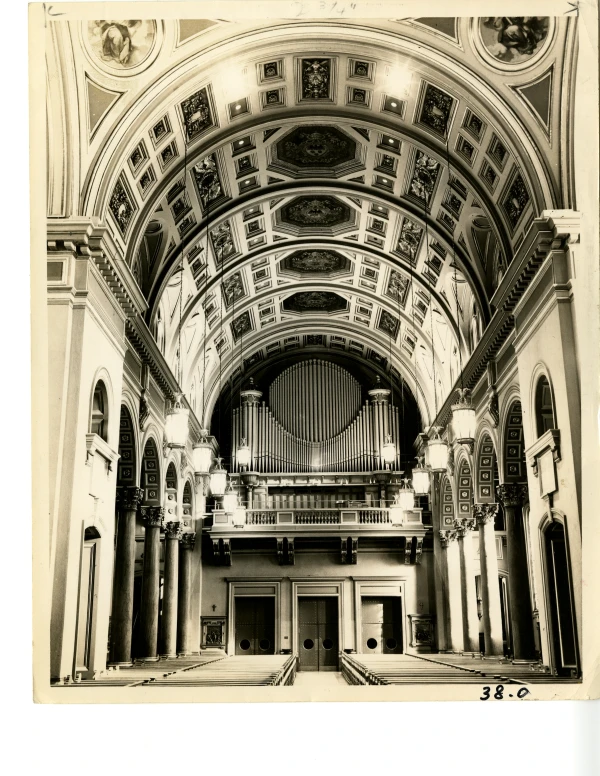
The departure of the cathedral’s longtime organist in 2015 led to an intensive search to fill that position. Over the course of that process, it became evident that the original organ had reached the end of its lifespan.
The church’s search for a new organ eventually led it to the Montreal firm of Juget-Sinclair, whose build of the new cathedral instrument is its largest project to date.
‘Every sort of trade imaginable’
Alex Ross, a sounder and organ builder with the organ company, told CNA that Juget-Sinclair’s organ-building process is highly “multidisciplinary.” The company was founded in 1994 by Denis Juget.
“In the beginning, it was mostly what we call ‘practice organs,’” Ross said. “So organs the size of, say, a China cabinet that organists can use at home to practice on.”
The fabricator “gradually worked up a reputation” via word of mouth. “And then eventually the first church organ was signed, and then another one, and then another one,” Ross said.
Considerable experience is necessary for a project the size of the cathedral’s new organ, Ross said.
“For a cathedral organ project like this, you wouldn’t want to hire a brand-new organ-builder who just set out under his own name and who’d only built a couple small organs,” he said.
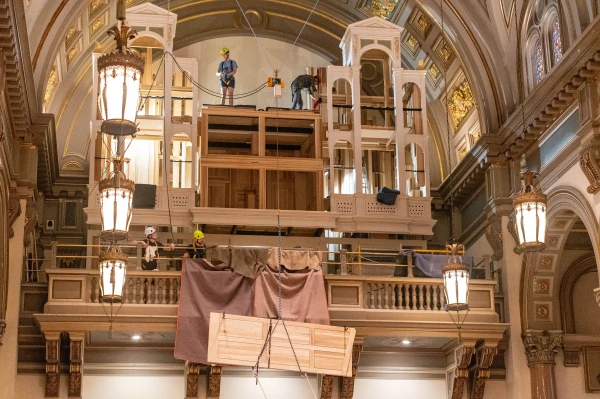
“You want proof that a company is able to produce a large instrument like this. And so gradually our organs got bigger and bigger and bigger as more clients and more churches started putting their trust in us.”
“To date, this is the biggest organ that we’ve built,” Ross said.
The organ itself is titled Opus 55 — the 55th organ the company has fabricated. The shop has also placed organs in Catholic and other Christian churches — in Wisconsin, New York, Texas, Vancouver, Florida, and numerous other locations, including as far away as Hong Kong.
(Story continues below)
Some organ builders outsource much of the countless materials that go into making an organ, Ross said, but Juget-Sinclair does virtually all of its work in house.
“In our philosophy, we try to build as much of the organ as we can ourselves,” he said. “So that means a lot of woodworking, it means tinsmithing to make the metal pipes. There’s ironwork, there’s welding, there’s electronics, there’s leatherwork. Just all kinds of different disciplines all packed into one.”
An organ the size of the cathedral’s has far more working parts than are visible from the outside, Ross said.
“You see the part that you’re meant to see, but behind that there’s thousands and thousands of pipes,” he said. “The longest pipe is about 31 feet long, and it actually plays below the range of human hearing, so we can only hear the harmonics inside the sound, but you feel the fundamentals.”
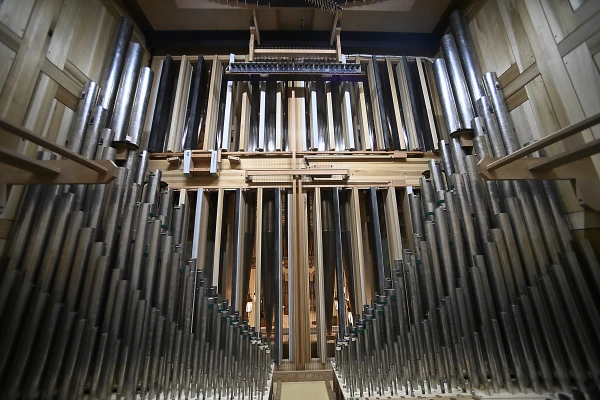
“And the smallest pipe … from the mouth to the top of the pipe, is only a quarter-inch long,” he said. “It’s high enough that most people past the age of 50 might not be able to hear it anymore.”
The cathedral’s new organ ultimately utilizes over 4,300 pipes. Each one of those must be meticulously checked to ensure it works perfectly in the Cathedral of the Sacred Heart itself.
‘It had to start with the sound’
The process of “sounding” the organ to ensure it works best with the cathedral’s acoustics is only the tail end of what has been nearly a decade-long process for the church to select and install its new centerpiece instrument.
It was clear roughly a decade ago that the old organ was on its last legs. “We had an organ concert that was played on the old organ,” Roger Neathawk, a board member of the cathedral foundation, told CNA. “And the guest artist pushed a key down and the key stuck.”
“It was unpredictable,” he said. “You didn’t know whether it was going to work or not.”
Carey Bliley, the chair of the cathedral’s organ committee, said that the “No. 1 consideration for us was probably quality of materials.”
“With all the problems we’ve had with the old organ and all the work that had been done, we wanted to make sure we had a builder that was going to build something that would last,” Bliley said.
“It had to start with the sound,” Kenny-Urban said of the searching process. “Did you want a crisp, clear sound? Did you want a rounder, more baroque sound? Because that would inform what makers we should talk to.”
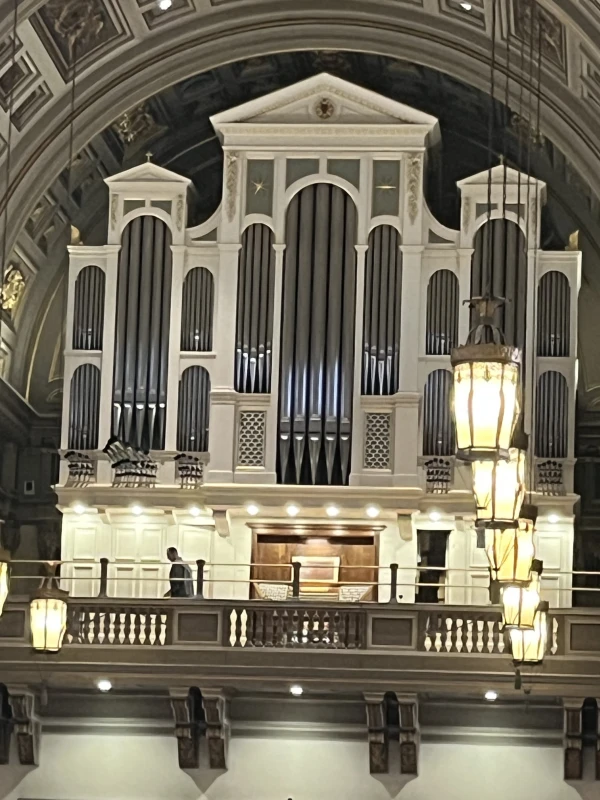
The search committee gradually narrowed down possible fabricators until it developed a short list of three. “Then we just went and did site visits to see and hear their instruments,” Bliley said.
Front-and-center for the cathedral was how to responsibly use the considerable amount of money allotted for the organ project.
“It was not so much about what’s going to cost the least,” Bliley said. Rather, the committee was focused on “what’s going to be the best use of the resources that go towards the organ long-term.”
“People are making donations,” Kenny-Urban said. “How do we use these responsibly for something that will last centuries?”
‘The majesty and gentleness of God himself’
Before the organ can last centuries, it must be perfectly fitted to the cathedral’s majestic space and acoustics. That involves not just installing the organ correctly but “sounding” it, or ensuring that its thousands of pipes work correctly and interact with the church’s soaring architecture.
“We have to go through every single one of those and make small adjustments so that it sounds its best in this particular room,” Ross said. “That process itself is two-and-a-half to three months of work.”
The sounders will work in teams of two to three people, 12 hours a day, six days a week, Ross said.
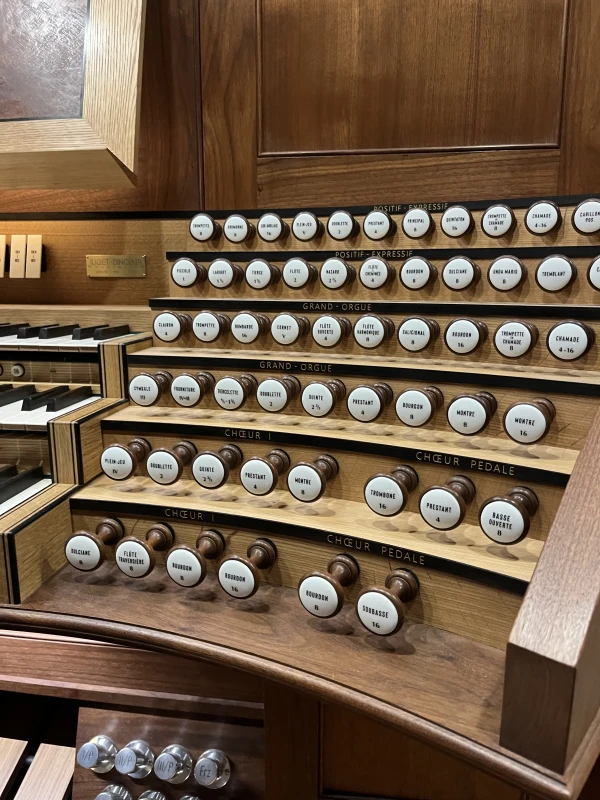
Robin Côté, the president of Juget-Sinclair who first started working at the shop in 2002, said the “magic [of organ-making] is in small details.”
“The artist that is making a portrait of somebody; it could be well done, but it could [also] be really, really impressive,” he told CNA. “You know, the treatment of the light, or small textures on the face.”
“It’s hard to define exactly what really makes a work of art outstanding,” he said. “So that’s what we are trying to do. We are searching for an idea. We have a musical idea in mind. We are searching for sound, searching for how the instrument reacts to our fingers.”
“We have a vision, but then we have to adapt our vision to the space,” he said of the sounding process.
Father Tony Marques, the rector of the Cathedral of the Sacred Heart, told CNA that the organ’s “power, range, and finesse reflect the majesty and gentleness of God himself.”
“The instrument also mirrors the Church’s response to God, as we praise him with all that he has given us: our longing for beauty and our ingenuity that produces mellifluous sounds,” Marques said.
He pointed to Vatican Council II document Sacrosanctum Concilium, the Constitution on the Sacred Liturgy, which states that the pipe organ “is to be held in high esteem, for it is the traditional musical instrument which adds a wonderful splendor to the Church’s ceremonies and powerfully lifts up man’s mind to God and to higher things.”
“Significantly,” Marques said, “the case of the new pipe organ resembles the Cathedral’s façade — a reminder that the purpose of the instrument is to enliven the Church’s prayer.”
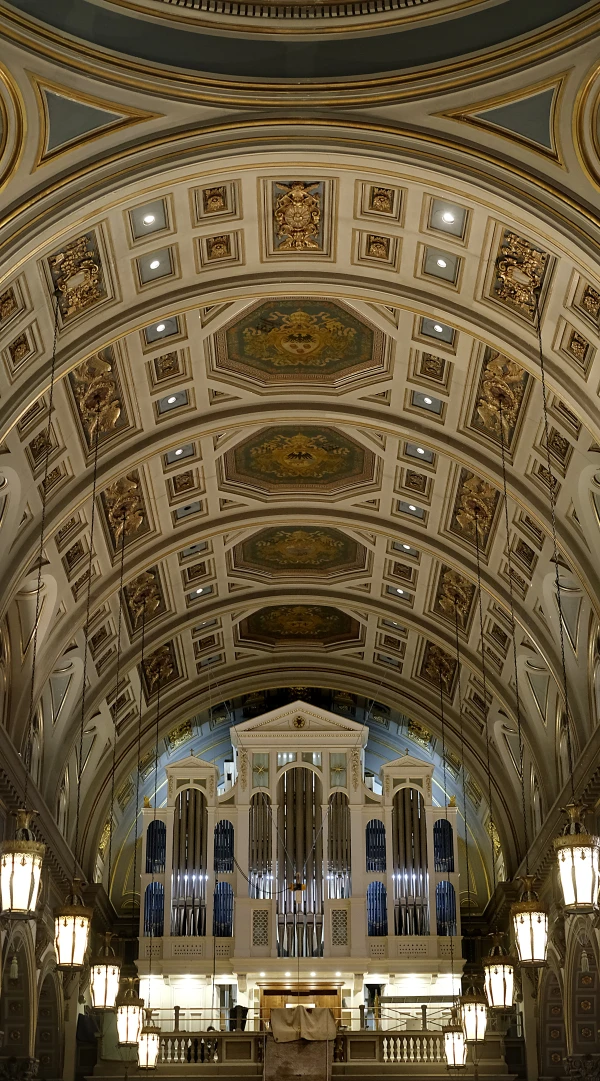
Ross stressed the intensive and demanding amount of work that has gone into drafting, constructing, assembling, and fine-tuning the organ.
“Thirteen people spent two years of their life working full time to build this organ,” he said. “And so there’s a certain sort of attachment that comes with that, at least for me. I sort of see all the instruments that we build as having their own personality.”
Bliley said the basic construction of the organ is “based off of old-world technology that’s still working and playing” centuries after it was first built. The cathedral’s new organ, he said, “should be here for a long time.”
Marques, meanwhile, said the towering majesty of the organ will continually bring people closer to God.
“This grand instrument will almost touch the cathedral’s ceiling,” he said, “lifting minds and hearts upward, to heaven.”





